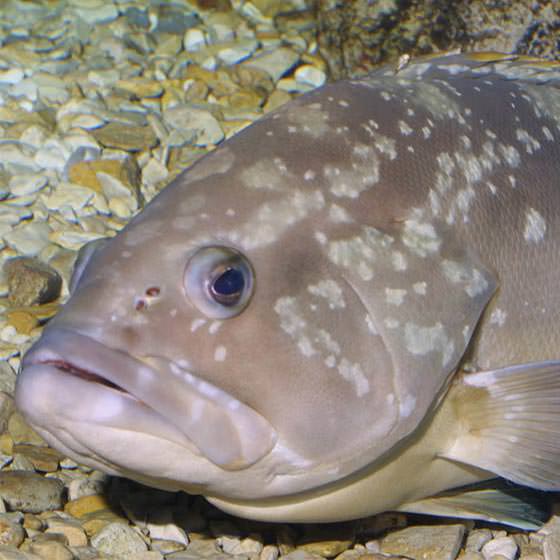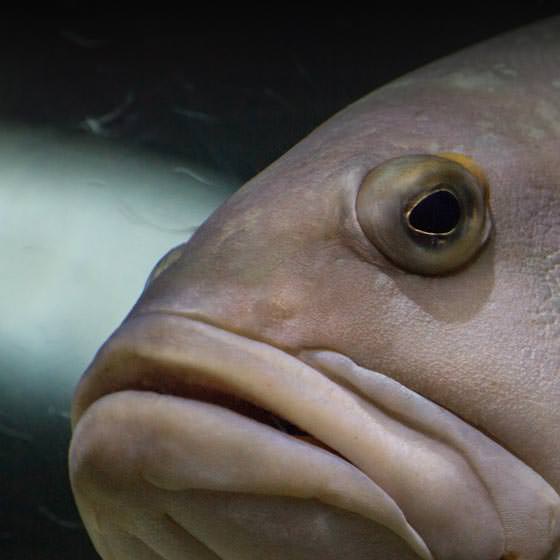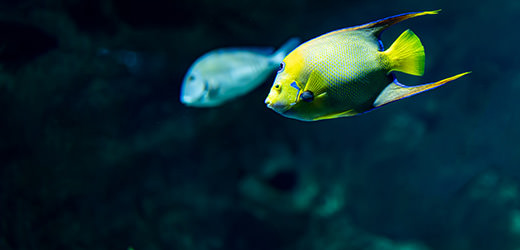Biology
Groupers belong to the Serranidae family, which counts more than 400 identified species.
Their bodies are massive and their prominent mouth holds many small teeth behind its fleshy lips. They are characterized by fins with spiny rays that they display whenever they sense any danger.
Groupers are solitary, territorial creatures. They look for a sheltered spot like a pile of rocks and adopt it as their permanent home. They only leave it to feed. Despite their lethargic appearance, they are voracious carnivores that lie in wait to hunt.




